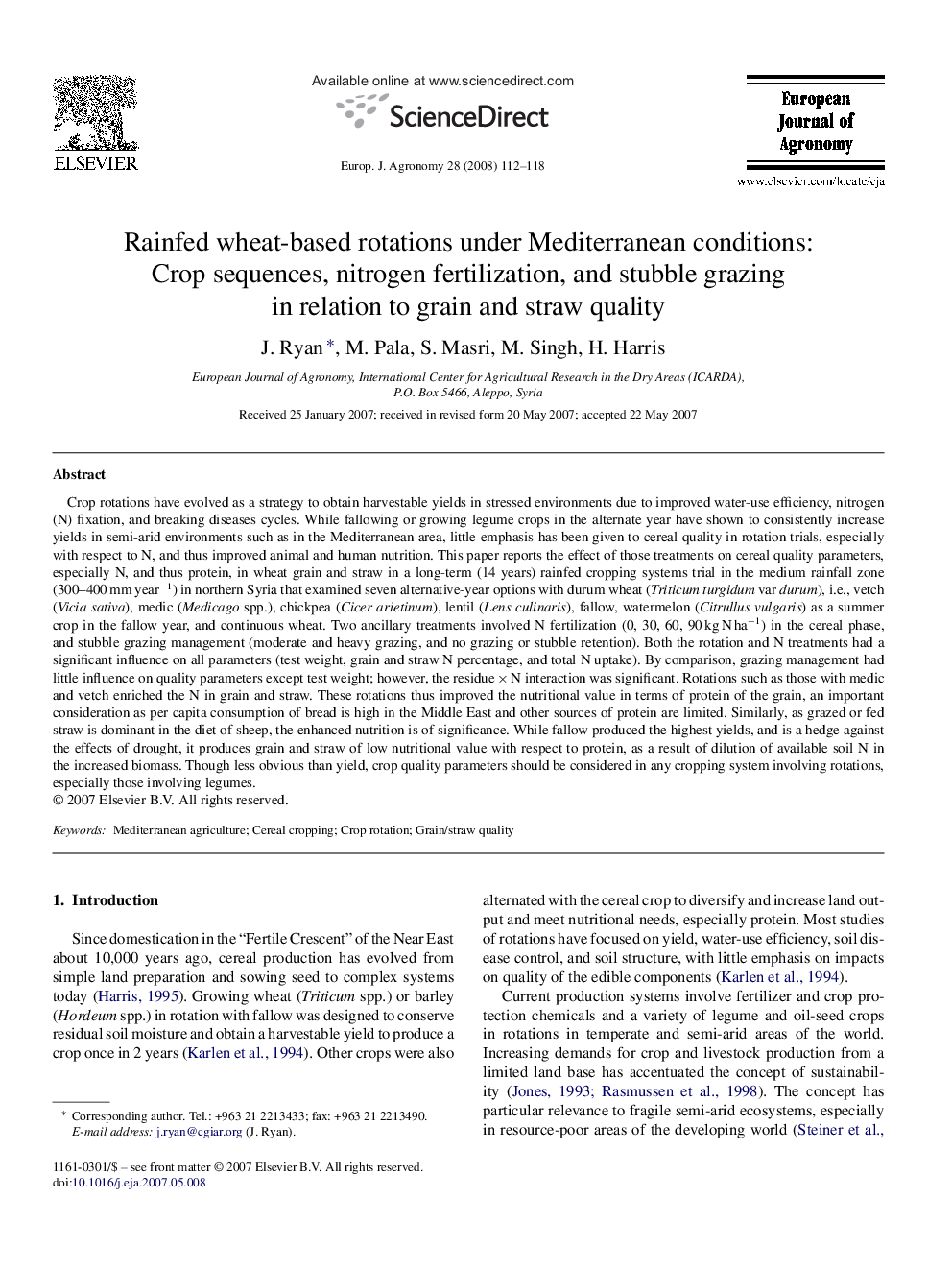| کد مقاله | کد نشریه | سال انتشار | مقاله انگلیسی | نسخه تمام متن |
|---|---|---|---|---|
| 4509522 | 1624520 | 2008 | 7 صفحه PDF | دانلود رایگان |

Crop rotations have evolved as a strategy to obtain harvestable yields in stressed environments due to improved water-use efficiency, nitrogen (N) fixation, and breaking diseases cycles. While fallowing or growing legume crops in the alternate year have shown to consistently increase yields in semi-arid environments such as in the Mediterranean area, little emphasis has been given to cereal quality in rotation trials, especially with respect to N, and thus improved animal and human nutrition. This paper reports the effect of those treatments on cereal quality parameters, especially N, and thus protein, in wheat grain and straw in a long-term (14 years) rainfed cropping systems trial in the medium rainfall zone (300–400 mm year−1) in northern Syria that examined seven alternative-year options with durum wheat (Triticum turgidum var durum), i.e., vetch (Vicia sativa), medic (Medicago spp.), chickpea (Cicer arietinum), lentil (Lens culinaris), fallow, watermelon (Citrullus vulgaris) as a summer crop in the fallow year, and continuous wheat. Two ancillary treatments involved N fertilization (0, 30, 60, 90 kg N ha−1) in the cereal phase, and stubble grazing management (moderate and heavy grazing, and no grazing or stubble retention). Both the rotation and N treatments had a significant influence on all parameters (test weight, grain and straw N percentage, and total N uptake). By comparison, grazing management had little influence on quality parameters except test weight; however, the residue × N interaction was significant. Rotations such as those with medic and vetch enriched the N in grain and straw. These rotations thus improved the nutritional value in terms of protein of the grain, an important consideration as per capita consumption of bread is high in the Middle East and other sources of protein are limited. Similarly, as grazed or fed straw is dominant in the diet of sheep, the enhanced nutrition is of significance. While fallow produced the highest yields, and is a hedge against the effects of drought, it produces grain and straw of low nutritional value with respect to protein, as a result of dilution of available soil N in the increased biomass. Though less obvious than yield, crop quality parameters should be considered in any cropping system involving rotations, especially those involving legumes.
Journal: European Journal of Agronomy - Volume 28, Issue 2, February 2008, Pages 112–118